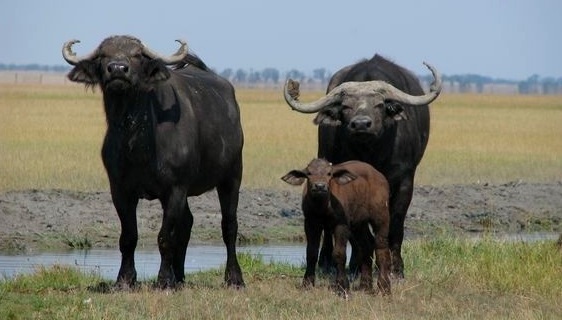Askania-Nova is recognized as one of the seven natural wonders of Ukraine and is one of the hundred most famous reserves and parks in the world. It was here that an ordinary landowner, who loved animals, began to breed his favorite and rare birds and mammals. He gave them such freedom so that they could feel free, as if in the wild.
This man, the founder of Askania-Nova, Friedrich Falz-Fein, who simply loved animals and bred them for his own pleasure, created the largest steppe reserve in Europe. He contributed to the preservation of the endangered Przewalski’s horse in the Asian steppes and brought this animal to Europe for the first time.

Now “Askania-Nova” is a zoo, arboretum and protected steppe with a total area of 33 thousand hectares with rare and endangered species of plants and animals in the middle of the pristine Ukrainian steppe. No wonder Askania-Nova was often called Noah’s Ark in the steppe.
Brief history of Askania-Nova
At the end of the 19th century, in the south of the Kherson region, a rich local landowner of German origin, Friedrich Falz-Fein, began to create a menagerie on a small plot of land he received from his father. Caring for animals was his hobby. The man loved animals so much that he endowed them with freedom: new animals, which were brought to the menagerie, were housed not only in aviaries but also at large – in the steppe. Almost all Falz-Fein’s money earned from the sheep business was used to maintain the zoo.
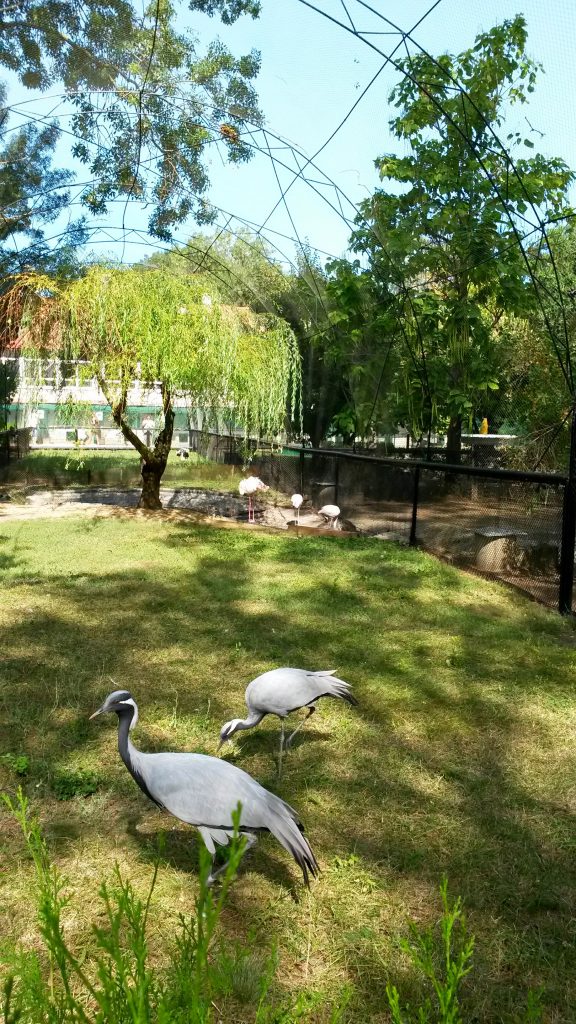
Here rare species were preserved and returned to the wild. Fortunately, all the political uncertainties of the twentieth century saved the menagerie from decline. From private hands, it became the property of the state. Such a small hobby of one person became a matter of world science with an area of 33 thousand hectares.
The love of his life
Falz-Fein had a sweetheart called Seraphyma. But because she was a serf, he could not marry her. But love does not know social inequality, and the two lovers were together, despite an informal relationship. However, there was a problem: the manager of the estate planted an explosive in the house. An evil plan was aimed at the owner, but his sweetheart died instead. In memory of his only love, Falz-Fein built a fountain with a sculpture of Seraphyma. Since then, he gave all his love only to his menagerie.

Animals of the reserve
The reserve is home to fauna, which is typical of this area – the steppes. These are reptiles, rodents, predators – wolves, foxes; horses, and other ungulates. However, its owner brought other animals to Askania.
European bison were brought from Belovezhskaya Pushcha in Belarus. There are also typical representatives of the North American prairies – bison, African antelopes, and zebras or saigas, and kulans from the Asian steppes.

Very quickly the zoo expanded, and it was inhabited by more and more animals that the owner brought from everywhere, even those that are not used to living in the steppes. Askanian scientists have adapted animals from other climatic zones to live in steppe conditions. For example, the African antelope canna has been tamed here so much that it lets humans milk her.
Przewalski’s horse, brought from Mongolia, appeared for the first time in Europe in Askania-Nova. Scientists of the reserve have done much to preserve and increase the population of this rare animal, and later returned it to the steppes of Mongolia, where it is almost no longer found. Przewalski’s horse is depicted on the family coat of arms of the Falz-Feins.
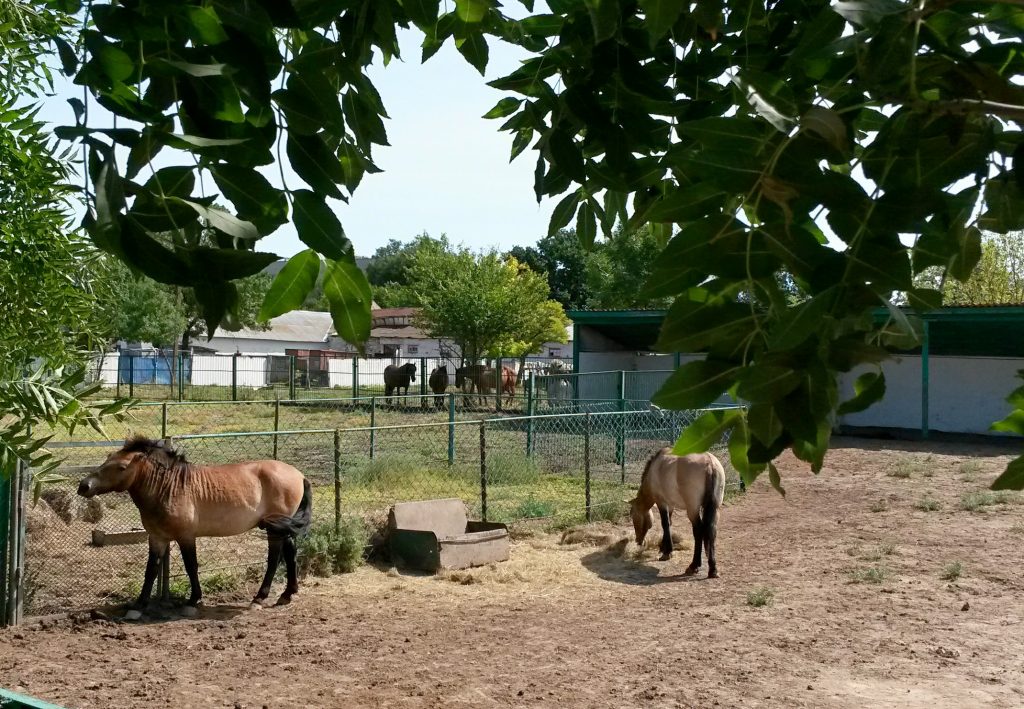
Now in the steppes of the Tavria region within the reserve, there can be found antelopes, zebras, saigas, deer, kulans, bison, ponies, buffaloes, wildebeest, mouflon. 69 species of animals from the list of the endangered species, the Red Book of Ukraine, live here.
Animals also migrate outside Askania. In particular, birds that live freely in the reserve can settle anywhere, even far outside the reserve or even in other countries. Migratory birds that migrate south to spend the winter also stop here.
The zoo is even more exotic. Here lamas, camels, mountain goats, and donkeys graze, and ostriches welcome visitors.

White deer and spotty Bambi in their cage.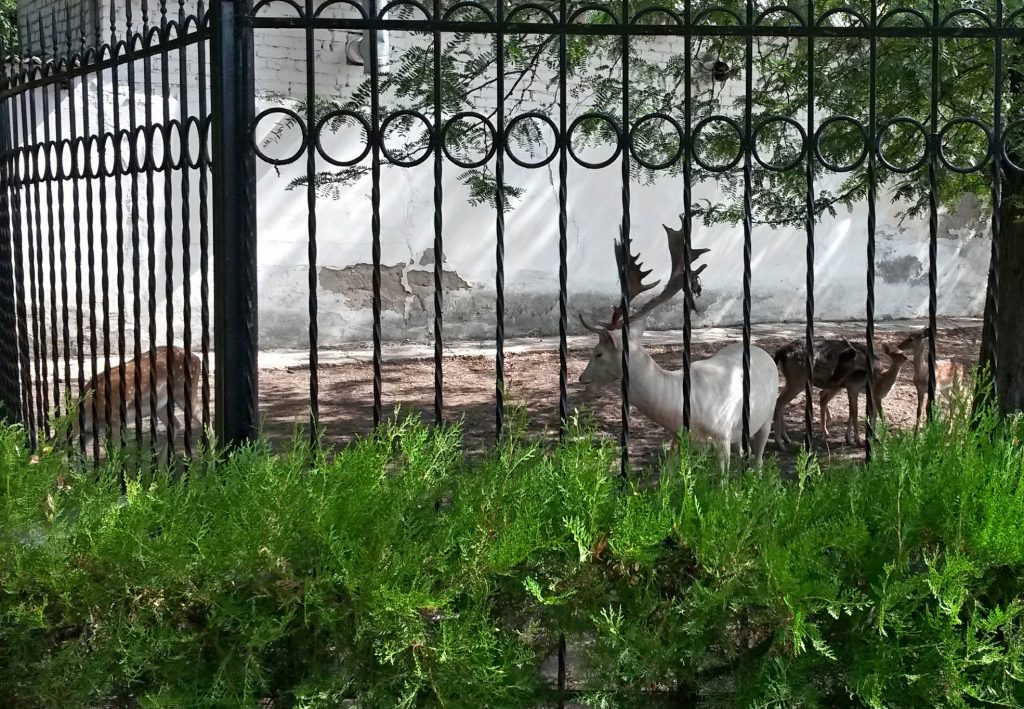 A peakock walks around eating food from visitors’ hands.
A peakock walks around eating food from visitors’ hands.
Tourists try to feed the animals despite forbidding signs.

A separate area in the zoo is for birds, of which there are about 60 species. In the ornithological park, you can see black swans, flamingos, cranes, pheasants, geese, ducks, funny crested chickens, storks.
Botanical Garden of Askania-Nova
Next to the zoo, which was increasingly expanding, its owner later set up a dendrological park. Now there are a variety of very rare trees and shrubs. What’s more, they all grow in the middle of the steppe!
The peculiarity of this park is that it must be constantly supplied by artificial irrigation. Two weeks without water – and the plants will die. For this purpose, artesian wells were specially drilled, from which water flows through canals.
The dendrological park in the largest steppe of Ukraine houses 73 species of plants listed in the Red Book of Ukraine. There are also rare species in the protected area that are not typical for the Eurasian continent. Feathergrass, certain species of tulips and cornflowers, which disappeared in the nature of Eurasia twenty years ago, continue to grow in the Ukrainian protected steppe.

In the middle of the park, there is an artificial pond, and a grotto that was built near it. Scenes from Captain Grant’s Children movie were filmed here.
Near the pond, there is an oak tree of desires with positive energy. Tourists are happy to be photographed near the water tower, which is more than 100 years old.
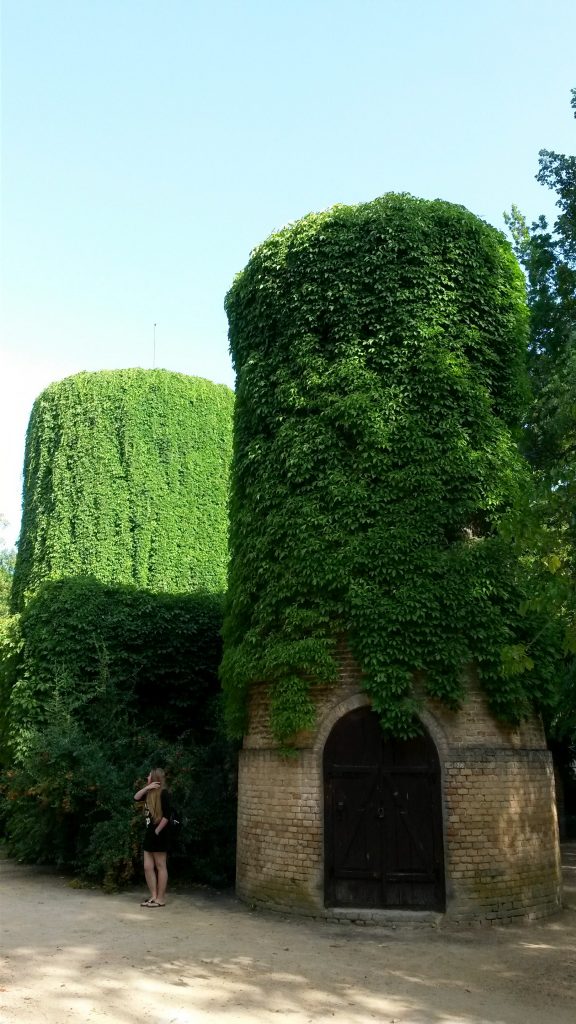
Special plants grown in Askania-Nova are planted in gardens and parks, and animals – brought to zoos of Ukraine and the world.
In warm weather – from April to early November – Askania welcomes visitors.
Travelers can spend hours in the botanical garden and Askania Zoo.

You can get acquainted with the animals up close in the steppe. To do this, the administration organizes safari in a car and in a horse-drawn carriage. However, the number of places is limited and tours must be booked in advance.
You can visit this picturesque place on our tour “Olvia, Dzharylhach and Askania-Nova“.

